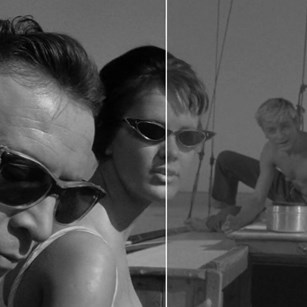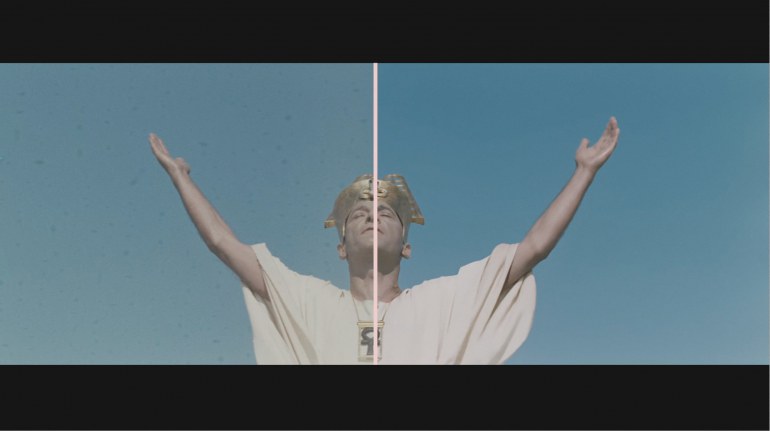
On the 30th of April the students had the opportunity to, as part of the school’s TOK course, participate in a very interesting meeting titled “Digital Restoration: The Second Life of a Film” (“Rekonstrukcja Obrazu: Drugie Życie Filmu”). The guest speakers – Mr Michał Wielgosz, Mr Jędrzej Sabliński and Mr Łukasz Rutkowski – represented the closely-associated companies of DiFactory, reKino and Soundplace. All of the aforementioned are companies linked with the film industry, where DiFactory specifically deals with digital image processing and commercial post production of films, and reKino specializes in the digital enhancement of moving image and restoration of old films.
A great deal of the meeting consisted of the guest speakers explaining the technical side of their business. While the terminology employed was a bit over the audience’s heads, the vivid descriptions of the process of digital enhancement made many of us realize what an interesting field of work our guests were involved in. Our guests informed us that reKino has done restorations of more than 45 films so far, and were even able to divulge their current project – the Roman Polański film “Nóż w wodzie” (“Knife In the Water”).
As it turned out, reKino has participated in the project Martin Scorsese Presents: Masterpieces of Polish Cinema, through which the best of reKino’s work has been presented in cinemas across the world. Interesting as the project’s history may be, what caught many of the audience member’s attention was what the guest speakers had to say on what effects they thought digital (re)enhancement might carry. The speakers emphasized how seemingly innocent ‘touch-ups’ in the restoration process enormously impact the way the movie is interpreted by viewers. An excellent example the speakers brought up Krzysztof Kieślowski’s film “A Short Film About Killing”, which we coincidentally watched during an earlier TOK lesson. The strong color contrast and saturation present in the film were shown as a deliberate move on the part of the members of reKino and DiFactory, for as one of the speakers pointed out, these largely contributed to the overall atmosphere of “A Short Film About Killing”.

The significance of digital reconstruction was further brought to our attention when one of the speakers presented the opposing sides of the “reconstruction ideology” debate. The ‘puritan’ side, if you may, argues that during the reconstruction process, no actions that could significantly change the original image should be taken. Those who employ a ‘creative’ approach in the process state that broadly defined mistakes in reconstructed films should be corrected, and that the reconstruction should make the film more accessible to the modern viewer. The clash between ‘ideologies’ isn’t the only problem the speakers brought up – many (now classic) Polish movies were censored, and the archives in which the films are stored are often unsuitable, lending to the awful state of many of the original reels.
The debate on the effects of censorship generally makes people think of oppression and Poland’s past. But hearing what impact those government actions made on viewers then increased our awareness of how big of a responsibility comes with digital reconstruction. Regardless of the confusing technical jargon, the meeting proved to be fascinating, and the audience was enchanted by the incredible work done by the companies of the guest speakers.
Aleksandra Meyer